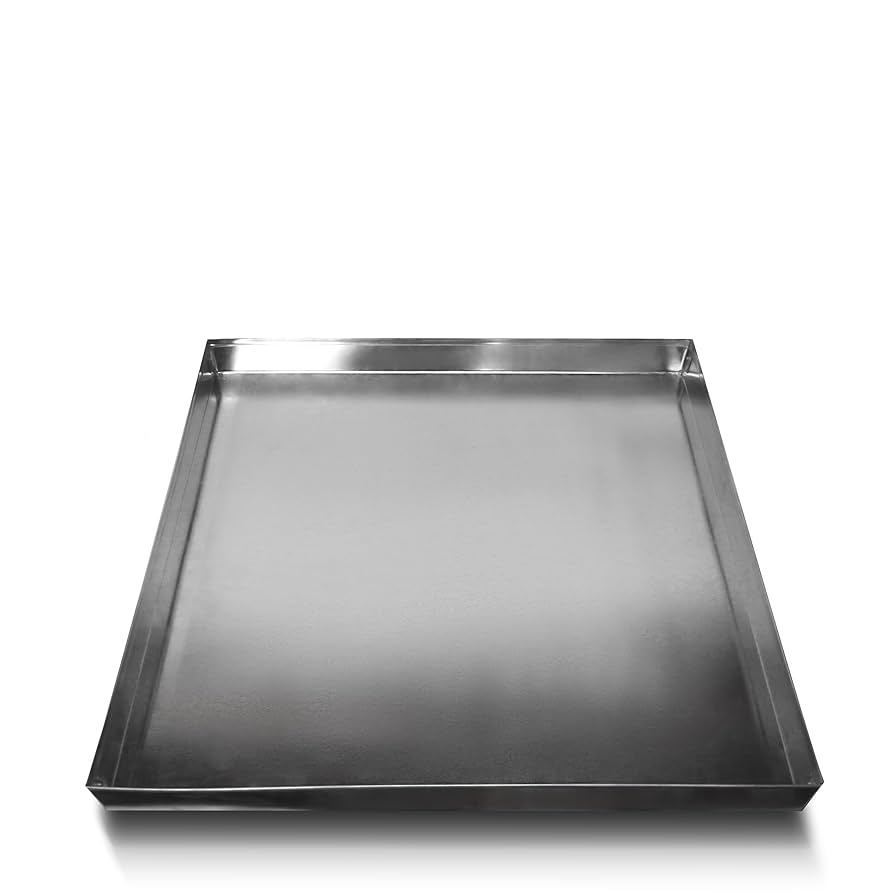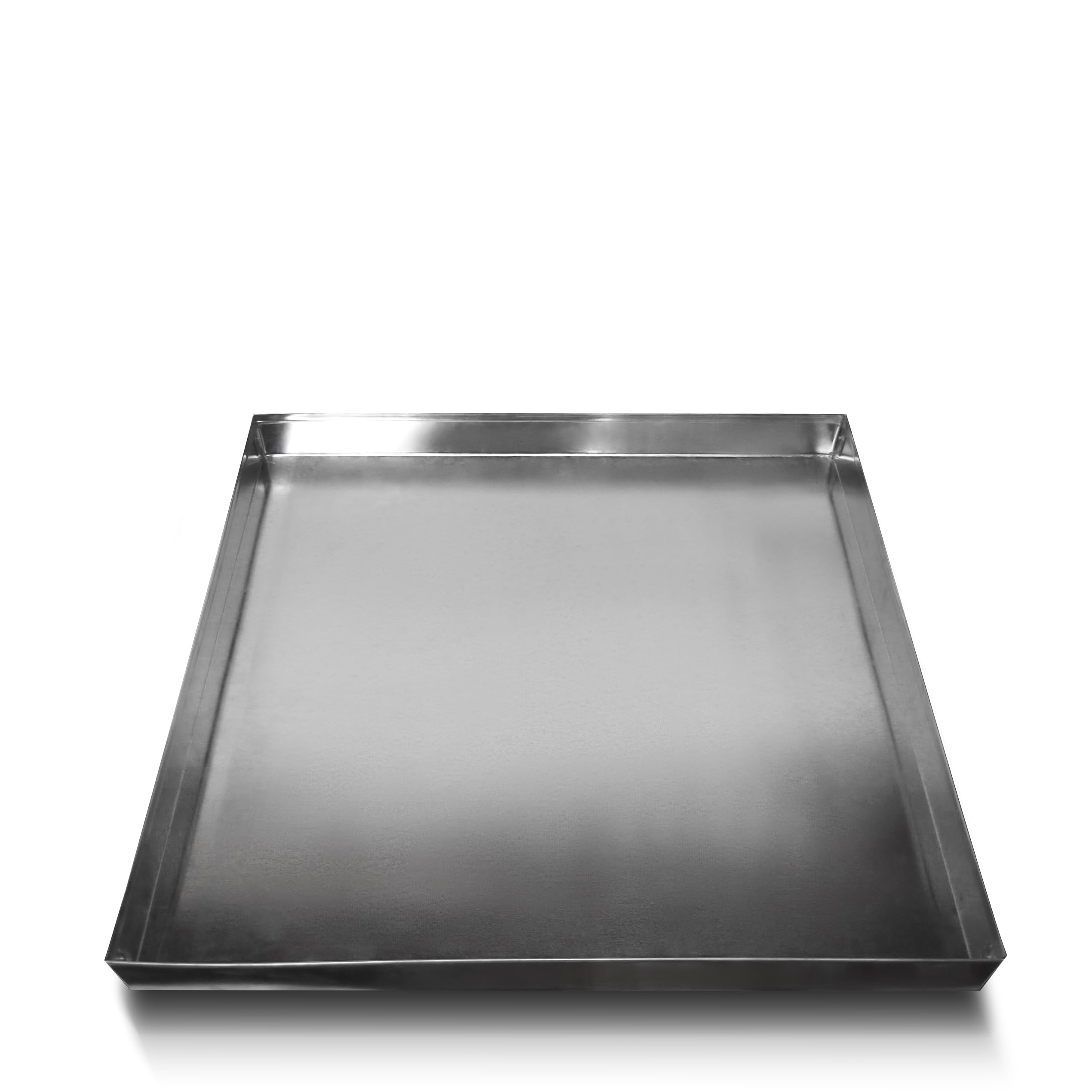Installing a hot water heater can be a daunting task, especially when you’re faced with conflicting advice. One question often arises: can you install a hot water heater without a drain pan?
This small but critical component can save you from a flood of costly repairs and headaches down the line. But is it always necessary? Before you decide, let’s dive into what you need to know. This guide will help you make an informed decision, potentially saving you time, money, and stress.
Keep reading to uncover the ins and outs of drain pans and their role in your hot water heater installation. Your peace of mind might just depend on it.
Page Contents
Why Drain Pans Matter
Many homeowners wonder if a drain pan is necessary for a hot water heater. The answer is yes. Drain pans play a crucial role in protecting your home. They catch leaks and prevent major water damage. Without one, you risk costly repairs and safety hazards.
Preventing Water Damage
Drain pans act as a barrier against water leaks. They catch water before it spreads. This helps prevent damage to floors and walls. A small leak can cause big problems. Mold can grow and weaken structures. A drain pan saves you from these issues.
Ensuring Safety
Safety is another reason to use a drain pan. Water heaters can leak unexpectedly. A drain pan keeps water contained. This reduces the risk of electrical hazards. It also prevents slipping accidents. Protect your family and home with this simple addition.
Installation Regulations
Installing a hot water heater without a drain pan can seem tempting. But it’s important to understand the regulations. Installation rules ensure safety and functionality. Ignoring them can lead to issues. It’s essential to be aware of both building codes and local ordinances.
Building Codes
Building codes set the standard for safety. They provide guidelines for hot water heater installations. These codes often require a drain pan. The drain pan prevents water damage. This is especially important in areas prone to leaks. Following these codes ensures safety and compliance.
Local Ordinances
Local ordinances can vary. They are specific to your area. Some places have stricter rules. Others may allow more flexibility. It’s crucial to check local regulations. This helps avoid penalties or fines. Contact your local government office for information. Understanding local laws is key to a smooth installation.
Risks Of Skipping Drain Pans
Installing a hot water heater without a drain pan can seem like a small oversight, but the risks involved are significant. The drain pan is a simple yet crucial component that acts as a safeguard against potential mishaps. Without it, you may be setting yourself up for costly damage and inconvenience. Have you ever wondered what happens when leaks go unchecked or how a small oversight can lead to big problems? Let’s dive into the risks of skipping drain pans.
Potential Leaks
Leaks are an inevitable part of a water heater’s life. Without a drain pan, even a small leak can lead to water pooling on the floor. This not only increases the risk of slipping but can also lead to unseen water damage. Imagine waking up to a wet floor without any warning signs. A drain pan provides that early alert, saving you from unexpected headaches. Does your current setup have this essential safety net?
Damage To Flooring
Your flooring bears the brunt of any water heater leaks. Water can seep into cracks, causing wood floors to warp or tiles to loosen. This damage can extend beyond the immediate area, affecting nearby rooms. I once overlooked the drain pan, thinking it was unnecessary. The result was a costly repair that taught me the value of this simple precaution. Have you considered the long-term impact on your flooring?
Not having a drain pan can lead to expensive repairs that could have been easily avoided. The small investment in a drain pan can save you from a world of trouble. As you plan your installation, think about the potential costs of skipping this critical component. Is it worth the risk?

Credit: www.amazon.com
Alternatives To Drain Pans
When installing a hot water heater, a drain pan is often recommended to catch any leaks or spills. But what if you don’t have a drain pan? Are there other options? You might be surprised to learn that there are alternatives that can be just as effective. Let’s dive into some practical solutions that can save you from potential water damage.
Elevated Platforms
Elevating your hot water heater can be a simple yet effective alternative. By placing the heater on a sturdy platform, you reduce the risk of water damage to the surrounding area. This is especially useful in basements or garages where space might be limited.
I once installed a water heater in my basement without a drain pan. Instead, I used a concrete block to elevate it. This not only prevented potential flooding but also made maintenance tasks easier. Have you considered how a small change in height can protect your home?
Ensure the platform is level and stable. An uneven surface could cause the heater to tip over. A wooden or metal platform can also work, but make sure it can withstand the weight and heat of the water heater.
Secondary Containment
Secondary containment involves creating a barrier around the water heater to catch any leaks. This method is particularly useful if the heater is installed in an area with sensitive flooring, like hardwood or carpet.
Consider using a waterproof liner or a shallow basin around the base of the heater. This can act as a catchment area for any leaks. I once used a plastic storage bin, cutting it to fit snugly around the heater. This DIY solution was both cost-effective and efficient.
Have you thought about using a secondary barrier to safeguard your floors? While it might require a bit of creativity, the peace of mind it provides can be invaluable. Whatever you choose, ensure it is durable and easily accessible for regular checks.
Installing a hot water heater without a drain pan doesn’t have to be a daunting task. By considering alternatives like elevated platforms and secondary containment, you can protect your home and keep your heater running smoothly. What other creative solutions have you discovered for managing potential leaks?
Steps For Safe Installation
Installing a hot water heater without a drain pan requires careful steps. Safety and efficiency should be your top priorities. Following these steps ensures a secure and reliable installation. Let’s explore the key steps for a safe installation.
Choosing The Right Location
Select a dry, level spot for the water heater. Ensure easy access for maintenance and repairs. Check for nearby electrical outlets if needed. Avoid placing it near flammable materials or in high-traffic areas. Ensure adequate ventilation to prevent overheating.
Properly Securing The Heater
Use brackets or straps to secure the heater firmly. This prevents movement or tipping over. Follow the manufacturer’s instructions for installation. Check that connections are tight to avoid leaks. Ensure the heater is stable and not wobbling.

Credit: www.amazon.com
Maintenance Tips
Installing a hot water heater without a drain pan can lead to potential leaks. Water damage might affect floors and walls. Regular inspections help spot issues early and ensure safety.
Installing a hot water heater without a drain pan can be a bit of a risk, but with the right maintenance tips, you can keep it running smoothly and safely. Regular upkeep is crucial to prevent water damage and ensure the longevity of your appliance. Let’s dive into some straightforward strategies that can help you maintain your hot water heater effectively.Regular Inspections
Regular inspections are your first line of defense against unexpected issues. Make it a habit to check your hot water heater every few months. Look for any signs of rust or corrosion on the tank. Ensure all connections are tight and secure. Loose connections can lead to leaks or inefficient heating. A quick glance might save you from costly repairs down the road. Don’t overlook the area around the heater. An inspection might reveal water stains or dampness, indicating a potential leak. Addressing these signs early can prevent bigger problems.Leak Detection
Leak detection should be on your radar. Water leaks can cause significant damage if not caught early. Use a dry cloth to check for moisture around the base of your heater. Pay attention to your utility bills. A sudden spike could indicate a hidden leak. If you notice a rise, investigate further to find the source. Trust your senses. If you smell something musty or hear water running when it shouldn’t be, it’s time to take action. These are subtle signs that might indicate a leak you haven’t seen yet. Consider installing a water alarm near your heater. It alerts you to leaks immediately, giving you a head start in preventing water damage. It’s a small investment for peace of mind. Have you ever experienced a sudden leak or unexpected water bill spike? Taking proactive steps now can save you from future headaches. Why not start with a quick inspection today?
Credit: www.whirlpoolwaterheaters.com
Frequently Asked Questions
Do Hot Water Heaters Need A Drain Pan?
Yes, hot water heaters often need a drain pan. It prevents water damage in case of leaks. Local building codes may require it. Drain pans are especially important for heaters installed indoors or above living spaces. Always check regulations to ensure compliance and protect your home.
Does A Water Heater Have To Sit On A Pan?
A water heater should sit on a pan to catch leaks and prevent water damage. Local building codes often require it. Ensure the pan is properly installed and drains to a safe location. This precaution helps extend the lifespan of your heater and protects your home.
Do You Need A Drain Pan?
A drain pan is essential for collecting leaks and preventing spills during maintenance tasks. It protects floors and eases cleanup. Investing in a quality drain pan can save time and hassle. It’s a practical addition to any workspace, ensuring efficiency and cleanliness.
Does A Water Heater Need A Drain Line?
Yes, a water heater often requires a drain line. It prevents flooding and allows safe disposal of excess water. Proper drainage ensures efficient operation and prolongs the heater’s lifespan. Regular maintenance and inspection of the drain line are essential to avoid potential leaks and water damage.
Conclusion
Installing a hot water heater without a drain pan isn’t always wise. Safety risks increase without it. Water damage can occur from leaks. Local codes may require a drain pan. Check before installation. A drain pan protects your home. Installation might seem simple, but consider future issues.
Consult a professional plumber for advice. They ensure proper installation and safety. Avoid unexpected costs from water damage. Investing in a drain pan now saves money later. Your home deserves protection. A small step now can prevent big problems in the future.
Choose wisely for peace of mind.
